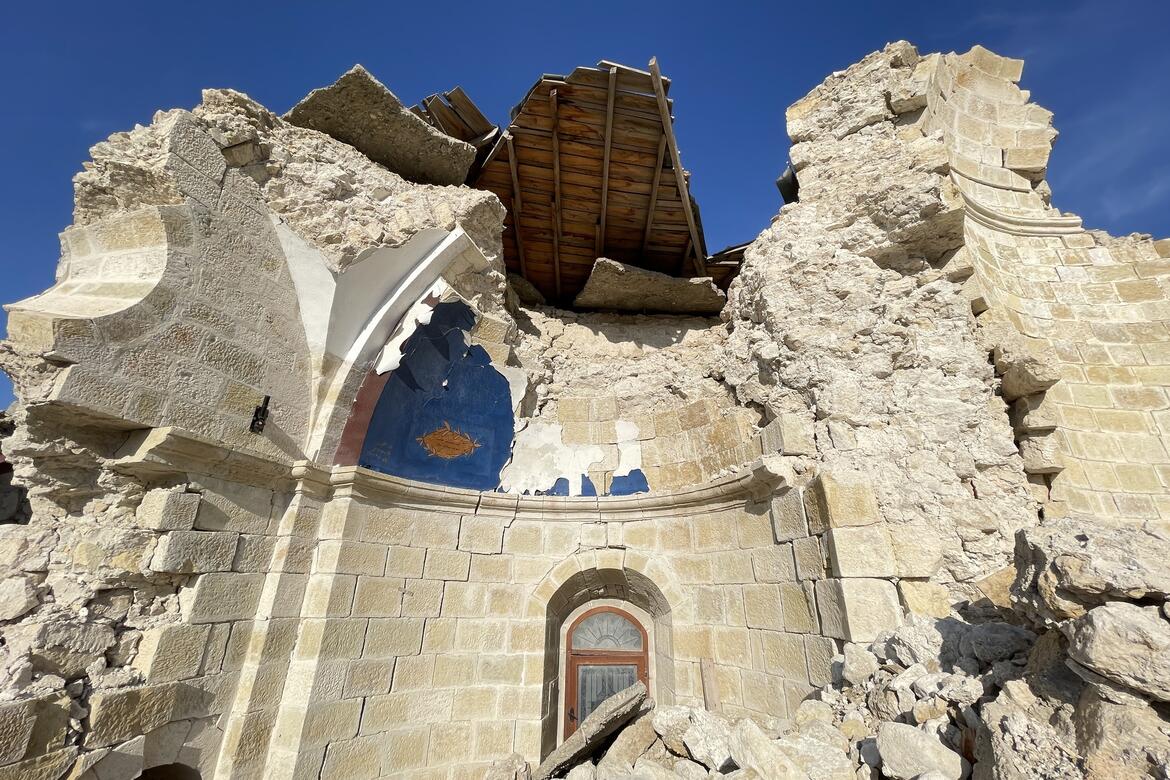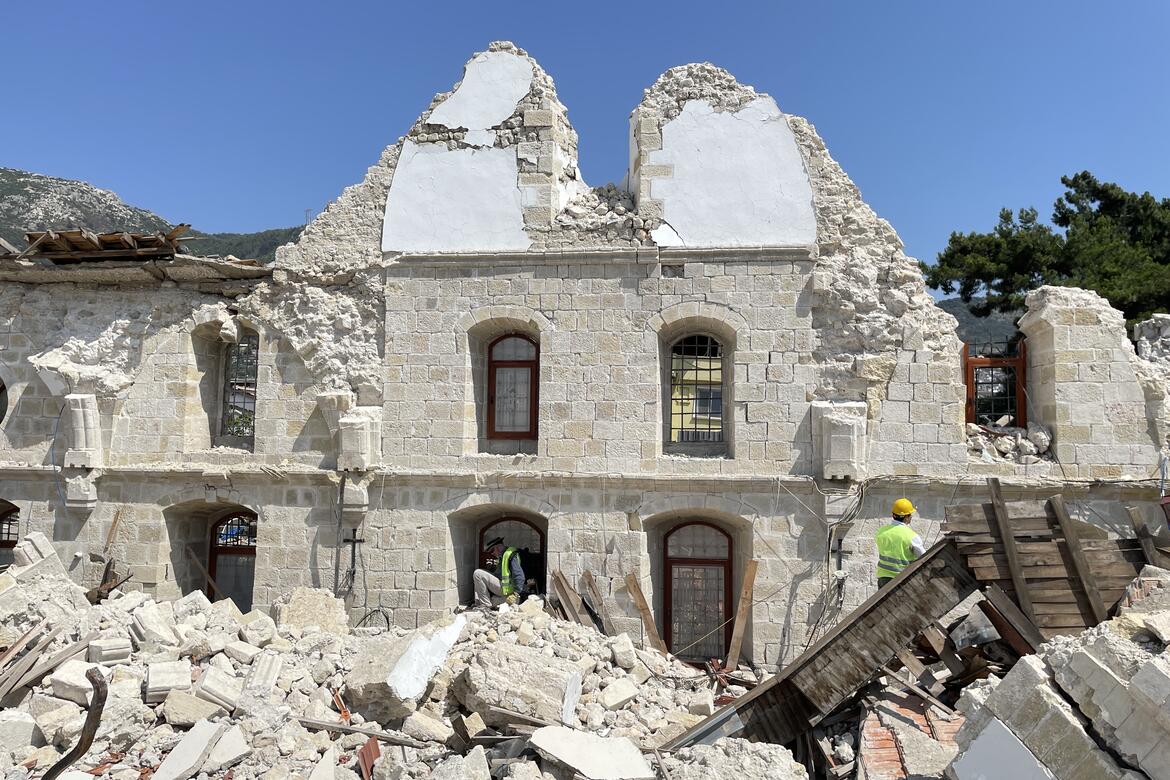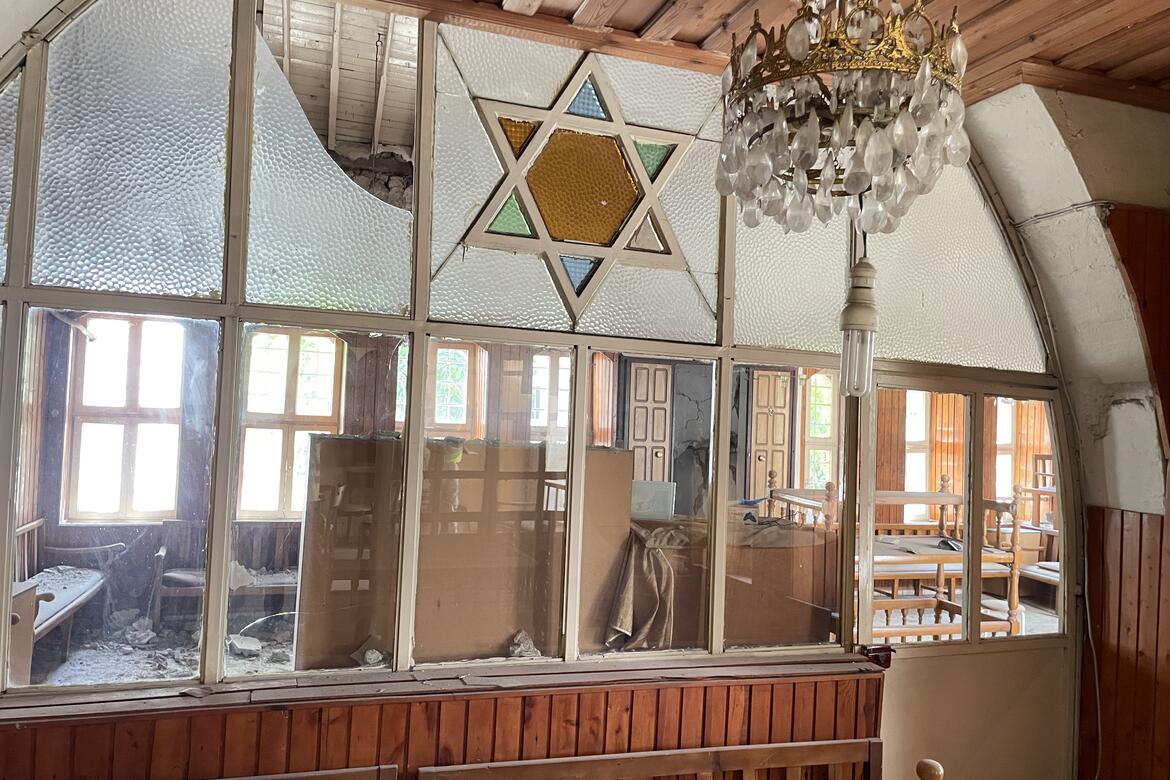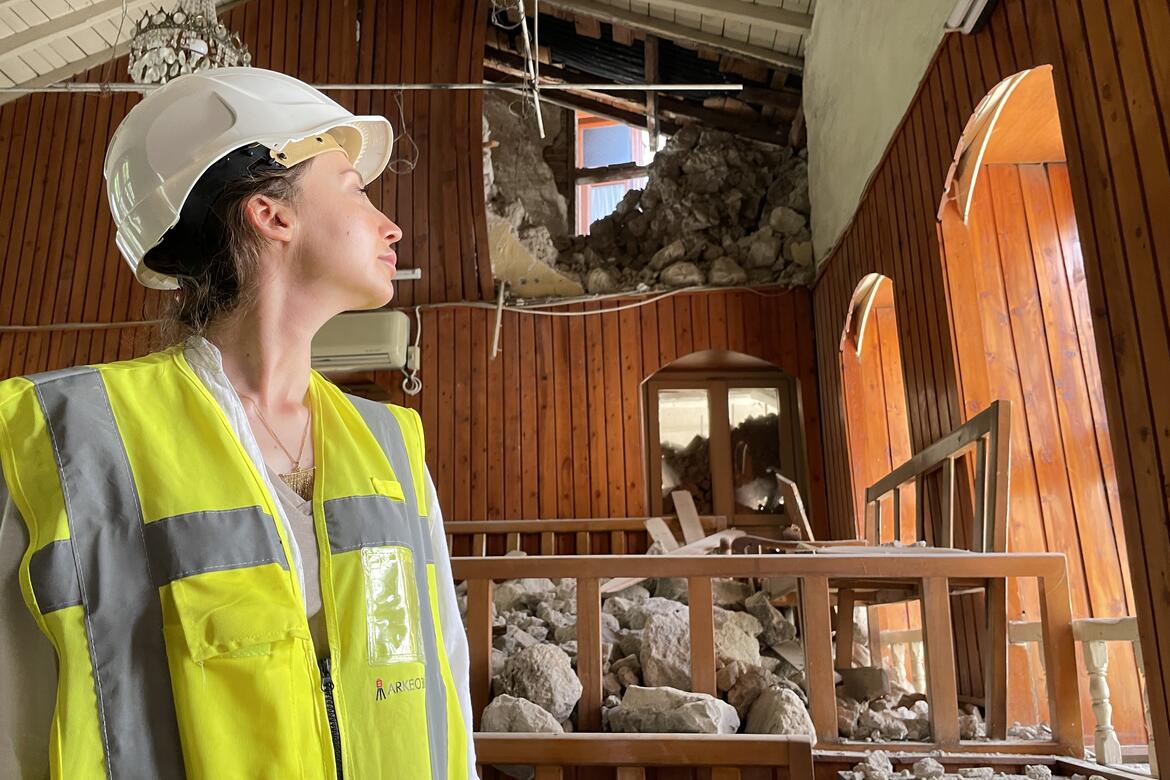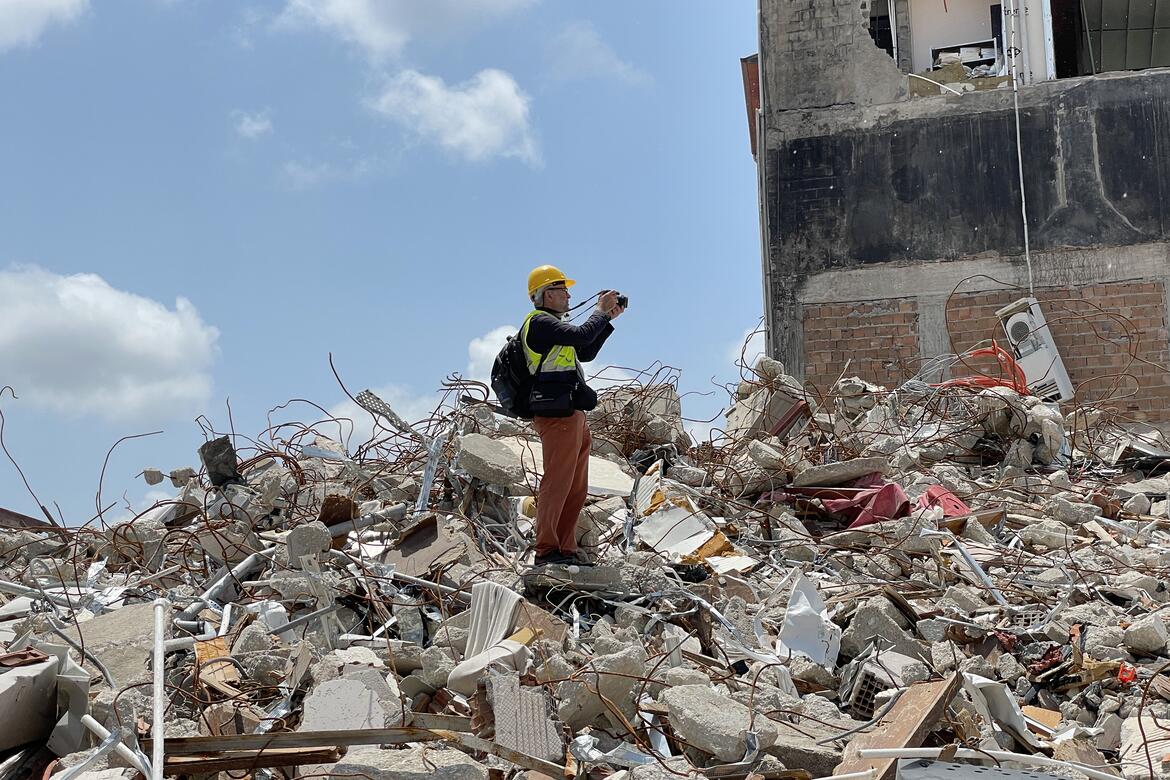Antakya in the Aftermath: In the Wake Devastating Earthquakes, Türkiye’s “City of Peace” Rebuilds
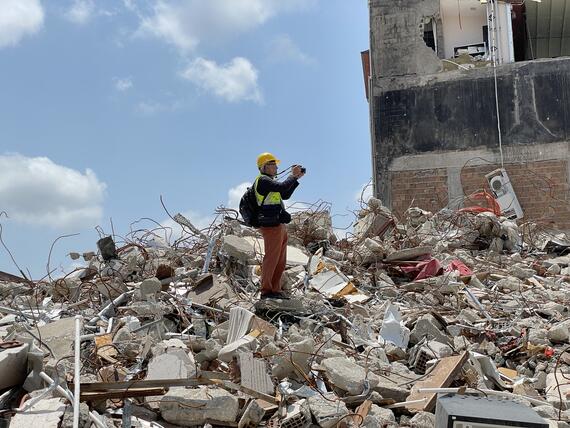
When Zeynep Gül Ünal accepted the 2023 Watch Award for her work protecting heritage in the wake of the devastating February 6 earthquakes in Türkiye and Syria, she did so with a quote from Seneca: “Disaster is Virtue’s opportunity.” The vice president of ICOMOS International, Gül Ünal has devoted her career to serving people and places in the wake of crises, from dam collapses in Brazil to terrorist attacks in Afghanistan. WMF Program Manager Javier Ors Ausín, who spearheads the organization’s Crisis Response Program, spoke with Gül Ünal about the arc of her career, from the birth of her interest in post-disaster conservation to her latest expedition to Türkiye’s earthquake disaster zone. This interview has been edited for clarity and length.
Javier Ors Ausín (JOA): Let’s start by speaking a little bit about yourself and how your professional and academic work connects to cultural heritage, to architectural preservation, and to the field of crisis response.
Zeynep Gül Ünal (ZGÜ): Two events in the 1990s impacted my involvement in the protection of cultural heritage. One of these was the Bosnian War. While I was doing my master’s in restoration, I was working as an assistant of Dr. Amir Pašić, who was trying to design a conservation project for peacetime [in former Yugoslavia.] This allowed me to understand a bit more about the contribution of cultural heritage to the construction of peace and the resilience of communities affected by war. Then, in 1999, the Marmara earthquake caused devastation in Türkiye. It was a personal loss for me. Shortly after the disaster, I participated in humanitarian aid efforts coordinated by my university, and my field experience after the disaster helped me to understand the importance of early involvement in conservation efforts.
JOA: You and some members of your team are ready to go to the field only a few hours or days after a crisis situation takes place. Can you explain the type of work you do on the ground and what you did after the February earthquake in Türkiye?
ZGÜ: On February 6, my search-and-rescue team deployed to the disaster zone. We got a request from the government to check the situation in the area—a couple of churches, a mosque, monumental buildings. We did the first damage assessment, flew drones, and did documentation. It was hard to reach the area at the very beginning because roads were blocked.
The support provided to communities affected by disasters is critical. In my opinion, the most valuable aspect of this support is the message that we are by your side. This is beyond financial support, beyond technical support—this is very important for [local people’s] psychology.
This is the one of the hardest operations that we have faced because we lost many friends—I’m from that part of Türkiye. In the first month, I didn't have a chance to check in with my family. When we got to the site, we saw that all the heritage experts were trying to do something. They were not only focused on their daily needs—they were trying to focus on heritage. I saw this in Nepal, in Pakistan, in India. People’s behavior changes when they think that they can protect something more important than them.
JOA: Thank you for sharing that with us, Zeynep. Can you talk a bit more about the current situation in Türkiye?
ZGÜ: Approximately 15 million people were affected [by the earthquakes on February 6 and their aftershocks] across an area larger than the land area of Bulgaria or Austria. Currently, humanitarian rescue operations have been completed, and debris removal efforts are ongoing—approximately 96 million tons of waste. We have 8,000 registered historic buildings [in the disaster zone]. The first focus was on securing artworks in museums and stabilizing damaged structural elements in monumental buildings. Now we’re moving from emergency response to the early recovery phase. The most critical point here is to understand the need of the community and protect their connection with their home. Balancing post-disaster recovery dynamics without causing emigration is essential.
I think the continuity of cultural heritage, both intangible and tangible, will serve as a guiding principle for the local community in belonging to the culture and the land. There is no reference point for recognizing your city unless you have monumental buildings. The affected areas were the centers of many important civilizations in Anatolia, and heritage is an integral part of the daily life there—bazaars, houses, religious buildings, and bridges all defined the community and their way of life. This cultural heritage is tangible evidence of those who existed before us—and the starting point for those who will come after us. They are the witnesses of existence that transcend time. And the greatest risk resulting from this loss of cultural heritage after a disaster is losing milestones for continuity. Continuity of cultural heritage serves as a driving force for affected communities to continue their lives. It reminds us that this has happened before and this will happen again, and how their ancestors survived. And it is evidence that they can do it again.
In 1970, an earthquake hit the Gediz area, and there is one photo that has always stayed in my mind—people doing Friday prayers in front of a mosque that had collapsed. I saw the same things after the Nepal quake—the temple had collapsed, and people were trying to do rituals in front of the collapsed building. It's not just a monument but also a way of connecting to what people believe and a way of feeling more at ease. That's our task here—not only to restore the stone or the metal or the wood. We are helping to restore life.
World Monuments Fund’s work at Antakya Earthquake Heritage Sites has been made possible, in part, by the U.S. Ambassadors Fund for Cultural Preservation (AFCP) and the U.S. Mission to Türkiye.

